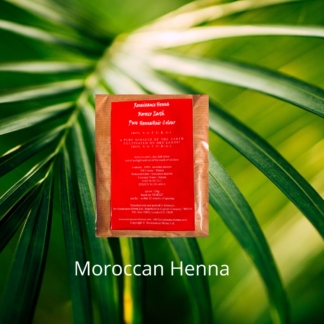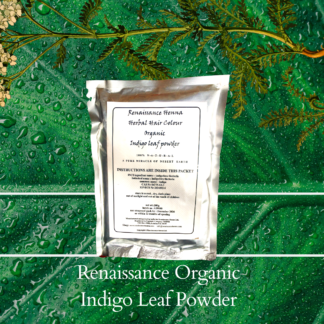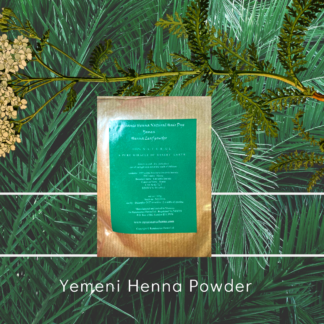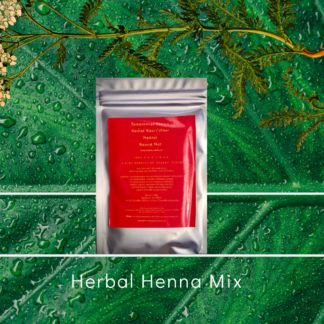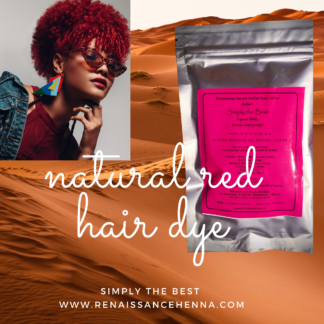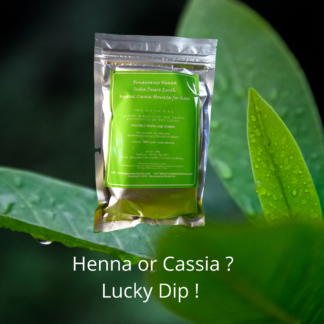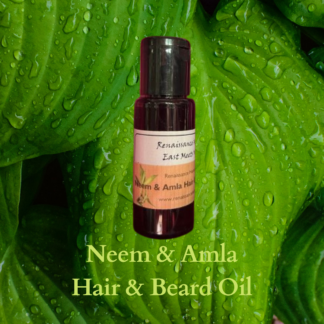Indigo Plant Hair Dye – which indigo is safe to colour hair ?
There are many types of indigo plants and indigo powder, and some are poisonous and some are contaminated with toxic chemicals. The indigo we sell and promote, which we consider the safest for hair, is the powdered leaves of the indigofera tinctoria plant. It’s a greenish colour powder that looks a bit like henna but smells different to henna; it has a strong odour. Our indigo plant hair dye has not undergone any chemical process. Powdered indigofera tinctoria leaves have been used safely as indigo plant hair dye, for centuries, to colour hair.
The method of extraction, however, can be critical in assessing the safety if indigo plant hair dye. If indigo is chemically extracted, as it is for use in fabric dyes, then other chemicals can contaminate it. This method often results in purple crystals, not green powder and it is sold as “indigo”.
Blue colour indigo powder is “vat indigo”, which means it has been fermented, and probably undergone an extraction process in which chemicals are used. This is not a safe indigo plant hair dye to use.
So, what are the other types of indigo ? And which ones are safe ?
Here are some links which tell you about all kinds of indigo, and about indigofera tinctoria. Remember there is not just one type of indigo. You’ll see references in some of these links to indigo being fermented. Our indigo is not fermented, or “extracted”. Renaissance Henna indigo plant hair dye is purely the crushed leaves of the indigofera tinctoria plant and has nothing added to it, and it colours hair. It’s green and not blue. The blue indigo has generally undergone some sort of change or treatment, or it comes from a different plant :
http://www.hort.purdue.edu/newcrop/med-aro/factsheets/INDIGO.html
http://www.chriscooksey.demon.co.uk/indigo/ – USEFUL RESOURCE FOR LEARNING ABOUT INDIGO & WOAD
http://en.wikipedia.org/wiki/Blue_Wild_Indigo BLUE WILD INDIGO PLANT ( NOT INDIGOFERA TINCTORIA)
http://en.wikipedia.org/wiki/Indigo_dye – INDIGO DYE
https://www.popsci.com/oldest-pigments-colors#page-6
A Word about Indigo
DON’T use indigo alone on any light hair colour (blonde hair colour / ash hair colour ), including grey hair, as it will turn lighter hair colours blue. But if you want a blue or green hair colour shade, then go ahead and strand test. On dark hair colour it is generally considered safe to use indigo alone and it will darken the hair even more towards black hair colour.
If you’re aiming for brown or black hair colour on grey hair, make sure the hair is orange from your henna before using indigo. And if the grey hair looks bluish after using indigo ( rare, but it could happen if henna didn’t cover it properly), then just repeat the henna application followed by indigo again if you wish to get a darker hair colour shade.
Always do a strand test and even if you like the idea of using indigo on its own, do experiment by using it after henna hair colour as well. You will find indigo is best used with henna for optimum results and spectacular hair colour.
What happens if you indigo grey hair or white hair without using henna first ?
This is what happens, as demonstrated by Maryam :
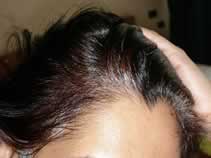 | 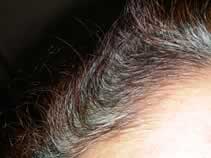 | 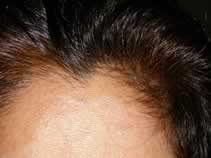 |
| Maryams’ Grey Hair ( grey roots are showing through after previous henna / indigo applications) | Indigo straight on to grey hair or white hair turns it a blue green | Henna applied after the indigo blue green hair turns it back to henna orange brown |
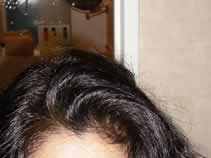 | ||
| Now the indigo result after henna ! | ||
Indigo on Black Hair, Grey Hair and Blonde Hair (click here)
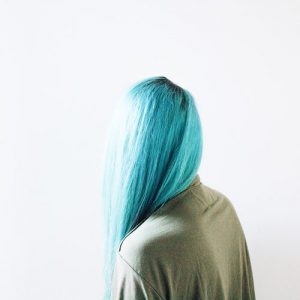
Patch Test
Some people would say it’s ridiculous to even suggest a patch test for anything as natural as henna, indigo, and cassia obovata. Although it’s true that all of these pure plant hair dye products are exceptionally safe to use – let’s face it, they’re a life saver compared to the chemical alternatives – the fact remains that we also have to acknowledge that in this day and age of allergies, allergic reactions, and haywire immune systems, a patch test is generally regarded as sensible for any product to check for allergies. Remember that even though these colour dyes come from plants, they could,, potentially, cause allergic reactions as well. Don’t assume that because something is “herbal”,“natural” or “organic” it means allergy free. Very few people, if any, will experience allergy symptoms from pure henna, pure indigo, and pure cassia obovata but it’s best to test and to be safe.
First time users are reminded to start out with the Renaissance Henna Natural hair Dye Kit which comes with a detailed instructions booklet for absolute beginners.
How to do a Patch Test
Pre-mix a small quantity of henna powder – about 5 gms (one teaspoon) – according to the instructions in the Renaissance Henna Natural Hair Dye Kit, and apply the paste to the inside of your arm or elbow crease. You can tie an old piece of material (cotton or muslin), or some plastic wrap like cling film, around the arm to keep the paste in place. Henna will stain the skin red / red orange. Wash off a couple of hours later and wait 48 hours. If you experience no irritation in that time then it’s reasonably safe to assume you can use it without any problem.
Next, do an indigo patch test. Mix up about 5 gms (one teaspoon) of indigo hair dye powder into a paste according to the Instructions in the Kit and wash off after about an hour or longer. Indigo may stain your skin a bluish colour. Wait at least 48 hours. If you experience no irritation in that time then it’s reasonably safe to assume you can use it without any problem.
Similarly, do a patch test for cassia obovata. Leave on for an hour or longer and wash off. Cassia obovata should not stain at all, but if it does stain it should be an exceptionally light yellow to light orange colour and it should wash off or fade within about 24 hours.
The skin stains are nothing to worry about. Provided you’re not allergic to these plants, the application of henna, indigo, and cassia obovata is probably good for you. If you do not experience any irritation, it’s fine to go ahead and use Renaissance Henna natural hair dyes and natural hair conditioning products.
Always do a Henna Hair Colour Strand Test and an Indigo Hair Colour Strand Test
Although a strand test may not be a fantastic indicator of your end result colour – it’s usually a lame indicator in comparison to the real thing – it’s still essential. You want to be sure that you are not averse to the likely colour or range of hair shade colours that you might achieve with henna hair dye or henna plus indigo. The best strand test result is achieved by testing a small area of hair as close to the nape of you neck as possible ( that way it’s unlikely to show if the result is not what you want ). Get someone to help you section your hair, apply the paste, and cover it (try cling film / saran wrap, wrapped around it) to avoid staining the rest of your hair. If you don’t like the idea of testing your hair this way, then wait till you have a trim and ask your hairdresser to put aside enough of your hair for testing. If your hair isn’t long enough for this kind of strand test or cut hair test, then collect enough hair from your hairbrush for hair colour testing, but generally this gives disappointing and often misleading results.

